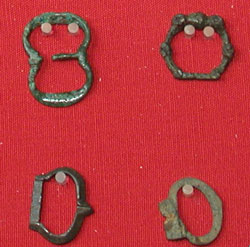 |
 |
 |
 |
 |
 |
 |
|
Who came? (3/3)
Little is known about the identity of those who visited Kirkstall or indeed the number of guests who received hospitality at the house. There are no official records, but simply sporadic references which generally relate to exceptional visitors or occasions, such as visits by the archbishops of York;(7) the probable visit of Lord John Beaumont of Hainault and his men (between 500-2000 men) during Edward III’s reign (1327-77);(8) the Templar who stayed for a short time at the abbey in the fourteenth century - before he escaped. We can, however, assume that Kirkstall’s guesthouse was never too quiet. The abbey’s location on the major route linking two important administrative centres, Pontefract and Clitheroe, may have meant that lords who were visiting their estates stopped off at the abbey with their retainers.(9) There also would have been visits from family, friends, patrons, merchants, secular and ecclesiastical officials. Women would not have been received as guests, and were forbidden even to enter the church until 1401, when the abbot of Kirkstall received special permission from the pope allowing them to enter his church on those days when access was given to men.
Finds recovered during the excavations shed some light on daily life in the guesthouse during its three hundred years of occupation. A chess piece, now in the Victoria and Albert Museum, and a stone with a game scratched on it suggest how some visitors may have amused themselves whilst staying here. Pieces of pottery provide some indication of changes in cooking methods over time.(10) Other finds include belt and purse buckles, pins, harness rings and brooches (see left). |
